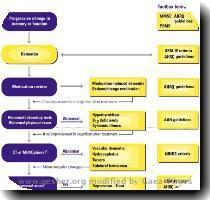NCAA injury surveillance report shows football concussions leveled off from 2004-2008
By Eric Olson, APWednesday, February 24, 2010
College football concussions plateau from 2004-08
OMAHA, Neb. — A new study used by the NCAA has found that the rate of reported concussions in college football has leveled off.
The Datalys Center for Sports Injury Research and Prevention, which administers the NCAA injury surveillance program, tracked injuries in football and other fall sports from 2004-05 to 2008-09.
The concussion rate dropped from 3.4 per 1,000 football players in 2004 to 2.4 in 2005. The figure was no higher than 2.8 in the three seasons that followed. The rate includes concussions reported during both games and practice.
The study’s co-author, Steve Marshall, said Wednesday that it’s difficult to pinpoint exactly why reported incidents have decreased. He said NCAA rules against spearing and head-down hits as well as better coaching techniques and awareness likely are contributing factors.
Dr. Robert Cantu, co-director of the Boston University Center for the Study of Traumatic Encephalopathy, said he doesn’t read much into the study’s findings.
“When you talk concussions in football, it’s grossly underreported,” Cantu said. “I’m not impressed one way or the other with this data convincing me there’s any less concussions in football today.”
Dr. Mark Lovell, director of the University of Pittsburgh Medical Center Sports Medicine Concussion Program, said he’s seen anecdotal evidence of a leveling off of concussions in his own practice.
“I think it was a reasonable analysis, with the caveat that there is always going to be a degree of underreporting with concussions,” Lovell said.
Concussions have become a hot-button issue at all levels of football. Even Congress has gotten involved, holding a hearing in Houston this month on head injuries in college and youth football and sessions last year that focused on the NFL.
The NFL has adopted new policies about player clearance in the wake of research that found evidence of a link between concussions and dementia. The NCAA Football Rules Committee has proposed requiring players with concussion symptoms to be cleared by a doctor before returning to competition.
In previous seasons, there have been rules changes created to reduce “dangerous contact” during games.
Marshall said the Datalys study, like others that track injury and disease rates, relied on a relatively small sample of data that were extrapolated to reach a conclusion that extended beyond the data pool.
During the five-year study period, there were an average of 230 Football Bowl Subdivision and Football Championship Subdivision programs each year. Of those 230, there were an average of 28 each year that provided injury reports to Datalys.
“Statistically, it’s not perfect,” Marshall said, “but it’s good enough that the information needs to be put in people’s hands and they need to use it. Concussions is such a serious problem that even if the statistics are not 100 percent pure, they’re 99, 95, 90 percent pure.”
The message of the study is that the numbers indicate more is being done to protect players from head injuries.
But, he said, there still are too many concussions.
“Statistics are just one side of the story. There also is the human side,” he said. “These numbers tell us we need to continue with efforts to protect the well-being of the players.”

